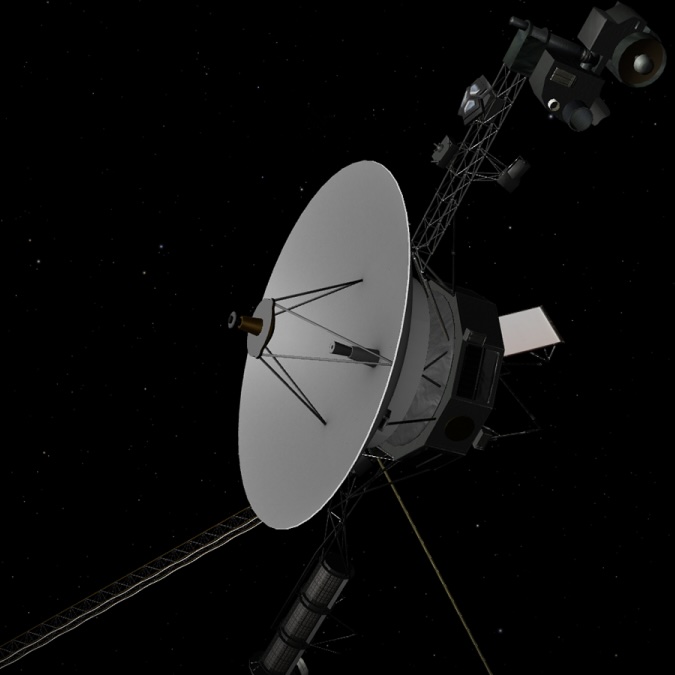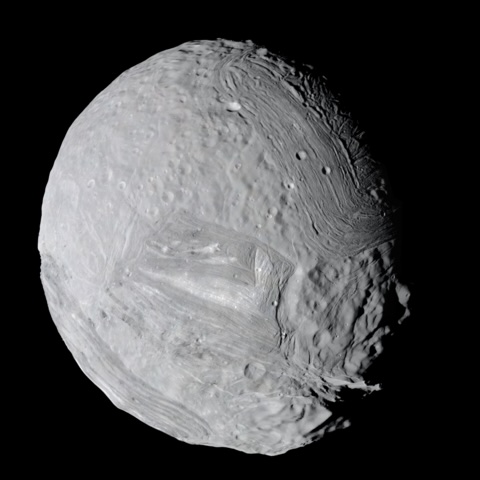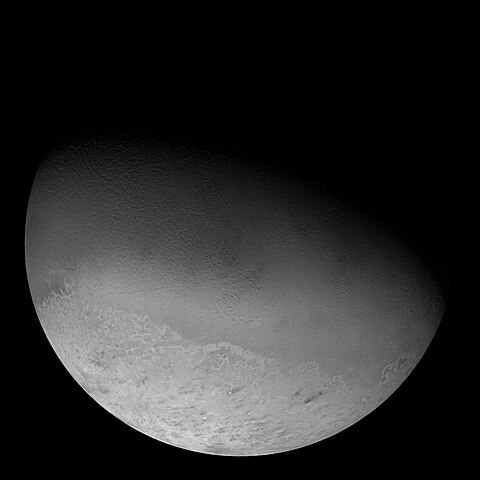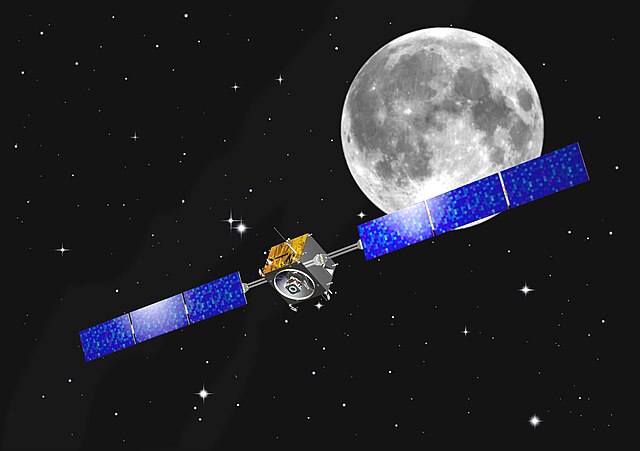1 day / second
0.5 AU
Titania
Moon of Uranus
The largest of Uranus's moons, Titania is a heavily cratered icy world with a complex system of valleys and fault lines carved into its surface during an ancient period of geological activity.
Key Facts
learn more | Wikipedia |
mass | 3.4550e+21 kg |
radius | 788.4 km |
semi-major axis | 435,910 km |
eccentricity | 0.001 |
inclination | 82.57º |
longitude of the ascending node | 0º |
argument of periapsis | 0º |
orbital period | 8.695 days |
surface gravity | 0.038 g |
discovery date | January 11, 1787 |
discovered by | William Herschel during systematic observation of Uranus |
name origins | Named after the Queen of the Fairies in Shakespeare's "A Midsummer Night's Dream" |
rotation | Tidally locked to Uranus |
density | 1.71 g/cm³ |
material composition | Roughly equal parts ice and rock, with water-ice crust and possible rocky core or liquid ocean layer |
albedo | 0.27 |
Parent Planet
Uranus
A cold, blue-green ice giant planet tipped nearly sideways on its axis, with a set of narrow rings and a family of at least 27 moons named after literary characters.
Spacecraft Visits
Voyager 2
Flyby
Launched in 1977, visited in 1986
Voyager 2 captured the highest-resolution images ever taken of Titania during its brief flyby on January 24, 1986, revealing a heavily cratered surface and a system of deep fault valleys.











